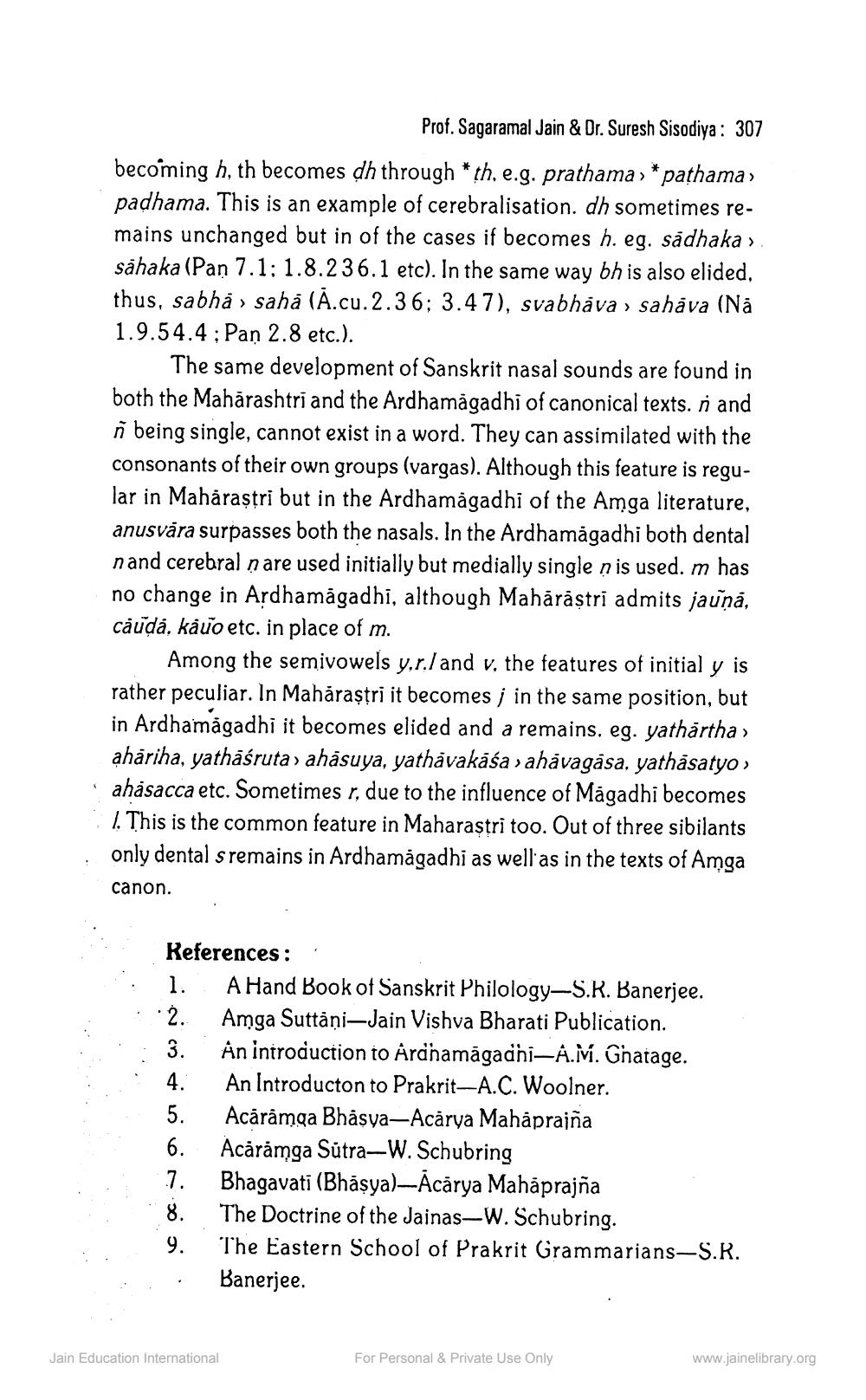________________
Prof. Sagaramal Jain & Dr. Suresh Sisodiya : 307 becoming h, th becomes dh through * th, e.g. prathama , * pathama, padhama. This is an example of cerebralisation. dh sometimes remains unchanged but in of the cases if becomes h. eg. sadhaka > sähaka (Pan 7.1: 1.8.236.1 etc). In the same way bh is also elided, thus, sabhå> saha (A.cu.2.36; 3.47), svabhāva , sahāva (Nā 1.9.54.4; Pan 2.8 etc.).
The same development of Sanskrit nasal sounds are found in both the Mahārashtri and the Ardhamagadhi of canonical texts. n and ñ being single, cannot exist in a word. They can assimilated with the consonants of their own groups (vargas). Although this feature is regular in Maharastri but in the Ardhamågadhi of the Amga literature, anusvāra surpasses both the nasals. In the Ardhamagadhi both dental nand cerebral n are used initially but medially single n is used. m has no change in Ardhamāgadhi, although Mahārāstrī admits jaunā, cauda, kåữo etc. in place of m.
Among the semivowels y,r./and v, the features of initial y is rather peculiar. In Maharaştri it becomes ; in the same position, but in Ardhamāgadhi it becomes elided and a remains. eg. Yathartha) ahariha, yathāśruta, ahasuya, yathavakaśa > ahāvagasa, yathāsatyo >
ahasacca etc. Sometimes r, due to the influence of Magadhi becomes : 1. This is the common feature in Maharastri too. Out of three sibilants
mains in Ardhama as well as in the canon.
.
A
1 Srom
+ AS
ll as in the texts Of Amga
References:
1. A Hand Book of Sanskrit Philology–S.R. Banerjee. . . Amga Suttaņi—Jain Vishva Bharati Publication.
3. An introduction to Ardnamāgadni-A.. Ghatage. 4. An Introducton to Prakrit-A.C. Woolner. 5. Acārāmga Bhâsya-Acārya Maháprajña 6. Acàrāmga Sutra—W. Schubring
7. Bhagavati (Bhāsya)-Acārya Maháprajña '8. The Doctrine of the Jainas-W. Schubring. 9. The Eastern School of Prakrit Grammarians–S.R. . Banerjee.
Jain Education International
For Personal & Private Use Only
www.jainelibrary.org




